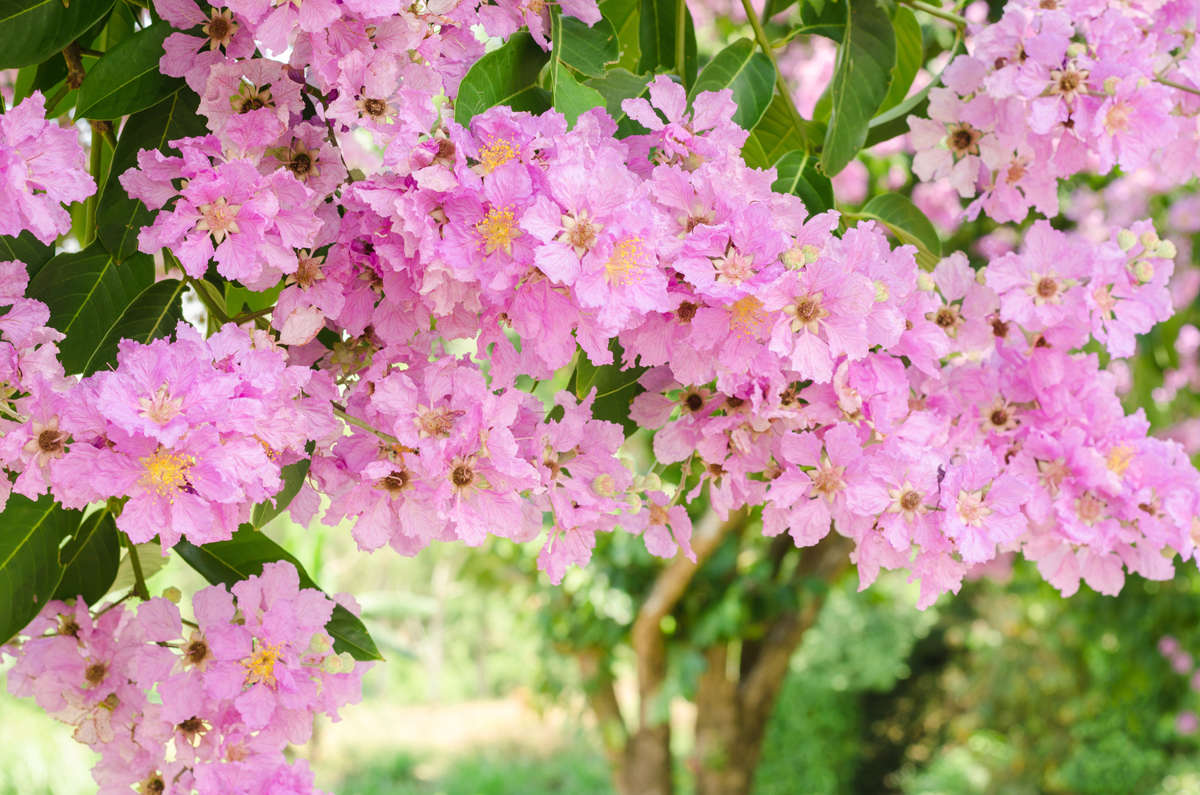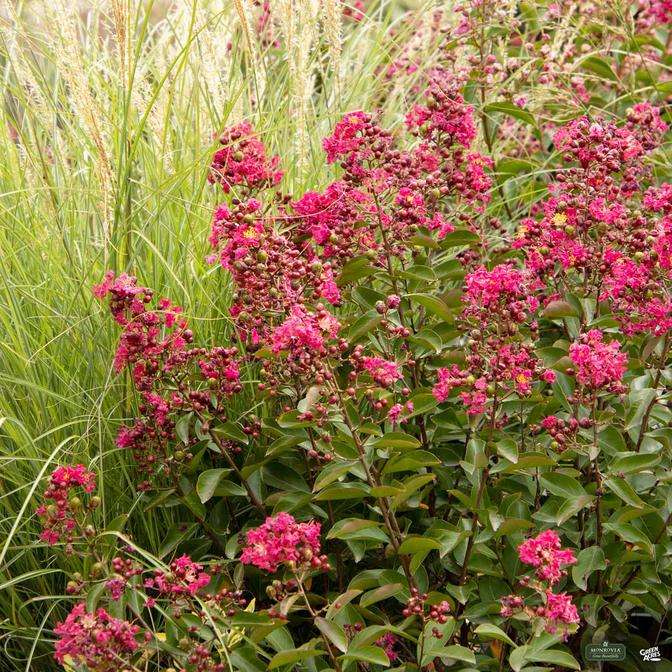
Why Crape Myrtles Take the Stage This Summer

Crape Myrtle—A Garden Showstopper
Crape Myrtle (Lagerstroemia indica), gets its name from the abundant spires of crepe-like flowers that it bears in the warm, summer months. These showy flowers combined with attractive bark, beautiful fall foliage, water-wise properties, and high durability have made Crape Myrtles a popular choice for hot weather landscapes.
Native to South East Asia, Australia, Oceania, and the Indian sub-continent, Crape Myrtles are perfect candidates for dry, hot regions. Known to some as “living bouquets,” their floral tufts range in color from soft lavender to vivacious red and many shades in between. Crape Myrtles come in a wide variety of sizes and are available as trees or shrubs. Gardeners may choose from a dwarf that can remain as small as five feet, to a tree that can reach up to 30’ high.
Green Thumb Tips:
Native to South East Asia, Australia, Oceania, and the Indian sub-continent, Crape Myrtles are perfect candidates for dry, hot regions. Known to some as “living bouquets,” their floral tufts range in color from soft lavender to vivacious red and many shades in between. Crape Myrtles come in a wide variety of sizes and are available as trees or shrubs. Gardeners may choose from a dwarf that can remain as small as five feet, to a tree that can reach up to 30’ high.
Green Thumb Tips:
- Does best in slightly acidic soils with good drainage.
- Feed in spring with a tree and shrub fertilizer.
- Prune in late winter to early spring.

Crape Myrtle
- Waterwise
- Attractive Bark
- Fall Color
- Profuse Blooms that Invite Pollinators
- Pet Friendly

Petite Crape Myrtle
- Waterwise
- Attractive Bark
- Fall Color
- Profuse Blooms that Invite Pollinators
- Pet Friendly
- Perfect Accents for Small Spaces
